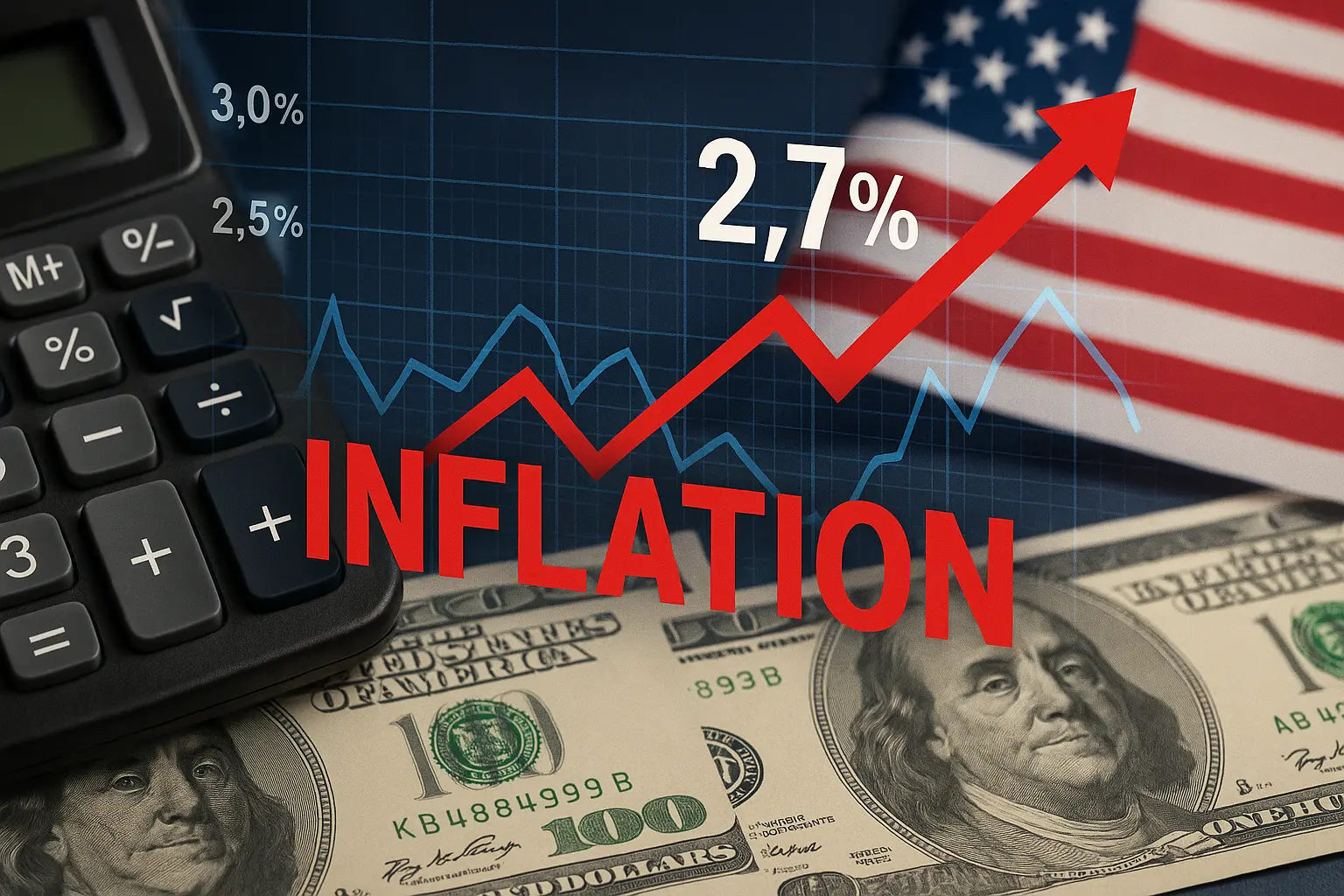Inflation in the United States held steady in July at 2.7%, matching June’s rate, despite the highest tariff levels seen since the 1930s. Falling energy and food prices offset rising shelter costs, but core inflation — excluding food and energy — rose faster than expected, raising questions about the Federal Reserve’s next move.
Inflation Stays Flat, But Pressure Builds Beneath the Surface
The latest Consumer Price Index (CPI) report from the Bureau of Labor Statistics (BLS) delivered a mixed picture for the U.S. economy. On an annual basis, inflation in July rose 2.7%, identical to June’s rate. Month-over-month, prices increased just 0.2%.
Energy prices fell 1.1%, largely driven by a 2.2% drop in gasoline. Grocery prices dipped 0.1%, offering some relief to consumers. However, shelter costs — which carry significant weight in CPI calculations — rose 0.2%, keeping overall inflation from dropping further.
Core Inflation Hits Highest Level Since February
While headline inflation stayed cool, core CPI — which strips out volatile food and energy categories — rose 3.1% year-over-year, the highest since February. On a monthly basis, core prices increased 0.3%.
Key categories showing notable increases include toys, furniture, and apparel, all of which have been affected by elevated import tariffs. Appliances were the lone exception, falling 0.9%.
Economists warn that tariffs, especially those on consumer goods, are beginning to seep into underlying price trends.
Tariffs and Market Volatility
A major U.S. retailer told CNN that price patterns are now “feathering,” fluctuating month to month in response to rapidly changing tariff policies. The uncertainty is making it harder for companies to plan and for consumers to anticipate costs.
Historic tariffs — at levels unseen since the Great Depression — are forcing companies to either absorb costs, pass them on to consumers, or adjust supply chains. The resulting volatility has become a defining feature of the 2025 economy.
Beef Prices Hit Record Highs
Secure the Talent You Need Before Costs Rise
Post your job on WhatJobs now and reach top candidates—lock in your hiring before wage inflation catches up.
Post a Job Now →One of the sharpest price increases in the July report came from beef, up 2.4% month-over-month and a staggering 11.5% year-over-year.
According to the CEO of Omaha Steaks, the U.S. cattle herd is now at its smallest size in 70 years, and strong demand is keeping prices elevated. The herd rebuild isn’t expected to start turning the corner until late 2026, meaning relief could be more than a year away.
Tariffs are adding fuel to the fire. Between 8% and 20% of America’s ground beef is imported, and restrictions on foreign imports have pushed up prices further.
Coffee Costs Climb
Coffee prices are also rising, driven by poor weather in producing countries and tariffs of up to 50% on imports from Brazil — a key U.S. coffee supplier. Industry experts warn that coffee drinkers could see continued price hikes into 2026.
BLS Staffing Cuts Raise Data Concerns
The BLS, which compiles CPI data, has been under political pressure in recent months. President Donald Trump has criticized the agency for alleged bias and replaced its commissioner. Budget cuts and layoffs have led the BLS to suspend data collection in three major metro areas and reduce surveys in 15% of the country.
Economists caution that reduced data coverage could make future inflation reports less reliable and more volatile.
What It Means for the Federal Reserve
Investors responded positively to the headline CPI staying steady, with stock markets rallying on hopes the Federal Reserve may have more room to cut interest rates.
However, the divergence between headline and core inflation complicates the picture. Some economists say the Fed could view this as a “dovish” signal, while others believe it increases the difficulty of reaching consensus on rate policy.
The labor market is also showing signs of strain, adding another factor to the Fed’s decision-making.
FAQs: U.S. Inflation July 2025
1. Why did U.S. inflation stay at 2.7% in July 2025?
Inflation remained steady due to falling energy prices and flat food costs, which offset rising shelter expenses and tariff-driven increases in other categories. The Bureau of Labor Statistics reported no change from June’s 2.7% annual inflation rate.
2. How are tariffs affecting U.S. inflation?
Historic tariffs — the highest since the 1930s — are pushing up costs in categories like toys, apparel, coffee, and beef. Some sectors, such as beef and coffee, are seeing sharp price hikes due to import restrictions and supply shortages.
3. Why are beef prices so high in 2025?
Beef prices surged 11.5% year-over-year in July due to the smallest U.S. cattle herd in 70 years and strong consumer demand. Experts say prices are unlikely to ease until late 2026.
4. What does the July CPI report mean for the Federal Reserve?
The headline CPI gives the Fed room to consider interest rate cuts, but higher core inflation and a weakening labor market complicate the decision. Economists are watching closely to see if the Fed shifts focus from inflation control to supporting employment.




